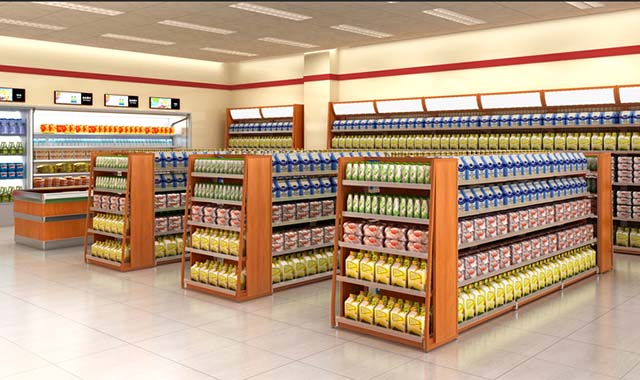


Supermarket racks, the backbone of any retail store, have undergone a remarkable evolution over the years. From traditional shelving systems to cutting-edge solutions, these fixtures have continually adapted to the changing needs and demands of the retail industry. In this article, we will explore the fascinating journey of supermarket racks, highlighting their transformation from basic storage units to sophisticated tools for product display and customer engagement.
In the early days of retail, traditional supermarket racks were simple and functional. They consisted of sturdy metal or wooden shelves designed to hold and organize products. While their primary purpose was efficient product storage, their design lacked emphasis on aesthetics and customer experience. Customers would navigate through rows of neatly arranged shelves, searching for their desired items.
As the retail landscape became more competitive, gondola shelving emerged as a game-changer. These versatile fixtures featured adjustable shelves that could be customized to accommodate various product sizes. Gondola shelving allowed retailers to maximize space utilization and display a wider range of products. Additionally, the introduction of gondola end caps provided prime merchandising space at the ends of aisles, creating opportunities for eye-catching displays and promotions.
The integration of technology revolutionized supermarket racks and transformed them into cutting-edge solutions for both retailers and customers. Here are some notable advancements:
Supermarket racks began incorporating digital signage and screens, allowing retailers to display dynamic content such as promotional videos, product information, and advertisements. These captivating displays engage customers, provide valuable information, and enhance the overall shopping experience.
RFID (Radio Frequency Identification) technology found its way into supermarket racks, enabling retailers to track inventory in real-time. RFID tags placed on products communicate with sensors on the shelves, providing accurate stock information and streamlining inventory management. This technology helps reduce stockouts, improve product availability, and enhance operational efficiency.
Cutting-edge supermarket racks now feature interactive displays that encourage customer engagement. Touchscreens or interactive panels allow shoppers to explore products, access additional information, and even place orders. This interactive element creates an immersive shopping experience and empowers customers with more control and information.
The latest evolution in supermarket racks involves the integration of smart and automated features. These solutions harness the power of artificial intelligence and data analytics to optimize store operations and improve customer satisfaction:
Smart supermarket racks are equipped with automated replenishment systems that detect low stock levels and trigger automatic reordering. This eliminates the need for manual stock checks, reduces the risk of out-of-stock situations, and ensures a seamless shopping experience for customers.
Sensors embedded in supermarket racks collect data on customer behavior, product interactions, and shelf performance. Advanced analytics algorithms analyze this data to provide insights on customer preferences, optimize product placement, and identify trends. Retailers can use this information to make data-driven decisions, personalize the shopping experience, and increase sales.
Supermarket racks now integrate with mobile devices, allowing customers to scan products using their smartphones for detailed information, pricing, and reviews. Mobile integration enhances convenience and empowers customers with instant access to product details and recommendations.
In recent years, sustainability has become a significant focus in retail design, including supermarket racks. Manufacturers are using eco-friendly materials and implementing energy-efficient solutions in their rack designs. Additionally, modular and adaptable shelving systems enable easy reconfiguration, minimizing waste and supporting store layout changes.
As technology continues to advance, the future of supermarket racks holds even more exciting possibilities. Some potential innovations include augmented reality displays, personalized recommendations based on individual shopping patterns, and integration with smart home devices for seamless grocery management.
In conclusion, the evolution of supermarket racks from traditional storage units to cutting-edge solutions is a testament to the ever-changing nature of the retail industry. The integration of technology, the rise of smart and automated features, and the emphasis on sustainability have transformed these fixtures into powerful tools for product display, customer engagement, and operational efficiency. With each innovation, supermarket racks strive to provide an enhanced shopping experience and meet the evolving needs of both retailers and customers.
Prev: What are the different types of bookshelves?
Next: The advantages of an automated storage and retrieval system